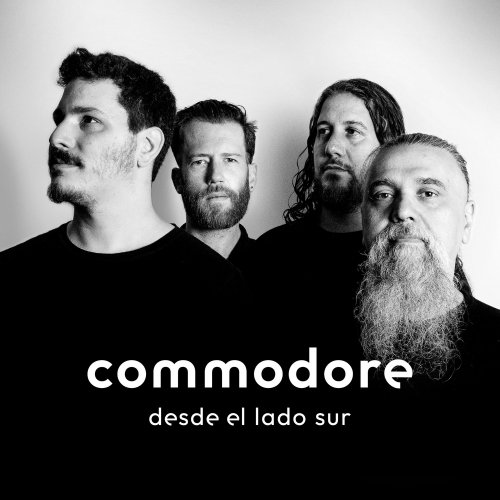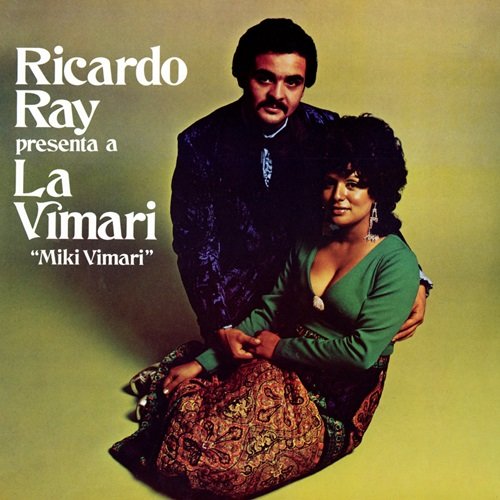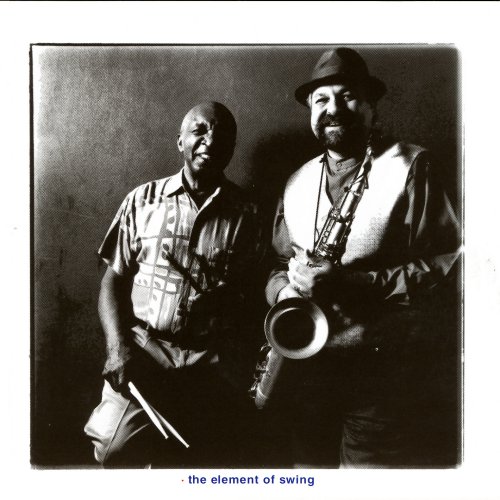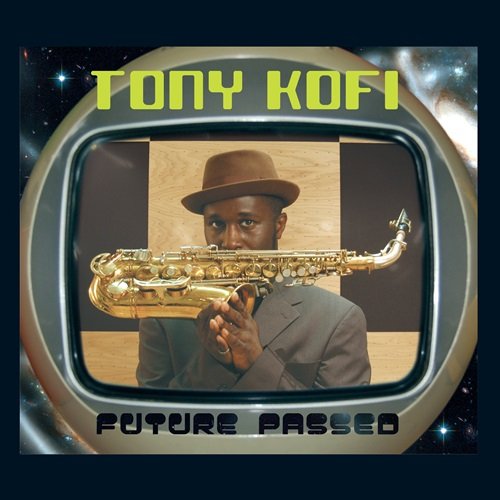Allegra Ciancio - Joachim Raff: Piano Works (2025)

Artist: Allegra Ciancio
Title: Joachim Raff: Piano Works
Year Of Release: 2025
Label: Da Vinci Classics
Genre: Classical Piano
Quality: flac lossless (tracks)
Total Time: 00:55:39
Total Size: 183 mb
WebSite: Album Preview
TracklistTitle: Joachim Raff: Piano Works
Year Of Release: 2025
Label: Da Vinci Classics
Genre: Classical Piano
Quality: flac lossless (tracks)
Total Time: 00:55:39
Total Size: 183 mb
WebSite: Album Preview
01. Romance, Op. 2
02. Dans la nacelle, Reverie-Barcarolle, Op. 93
03. Eglogues, Op. 105: No. 1, Allegro molto
04. Eglogues, Op. 105: No. 3, Andante quasi Larghetto
05. Eglogues, Op. 105: No. 4, Andante mosso
06. Fantaisie, Op. 142
07. Deux meditations, Op. 147: No. 1, Andante
08. Deux meditations, Op. 147: No. 2, Andante
09. 2 Piano Pieces, Op. 157: No. 1, Cavatine. Andante
10. 2 Piano Pieces, Op. 157: No. 2, La Fileuse. Etude. Allegro moderato
11. Idylle, Op. 166 No. 2
Joachim Raff occupies a curious place in Romantic music. In his own lifetime he was celebrated as one the leading composers of his era, admired by luminaries such as Mendelssohn, Liszt, Hans von Bülow, and Clara Schumann, yet his music fell into obscurity after his death. Listening to Raff’s piano works today, one discovers a composer of imagination and refinement who bridged the classical traditions of Beethoven and Mendelssohn with the revolutionary new directions of Liszt and Wagner. His style blends formal clarity with poetic expression, fusing lyrical melody and rich harmonic colour with an intellectual rigor born of his unique position at the crossroads of nineteenth-century musical currents.
Raff’s early years were far from privileged. Born in a small Swiss town and largely self-taught, he began his adult life as a schoolteacher. His musical talent, however, soon caught the attention of Felix Mendelssohn, who in 1844 endorsed Raff’s first piano compositions and secured their publication. Among these youthful works was a delicate Romance op. 2, from 3 morceaux (1876), a tender song without words that displays the hallmarks of Raff’s emerging style. In this short Romance, an arching melody sings over a simple accompaniment, conveying an earnest intimacy and heartfelt warmth characteristic of early Romantic lyricism. One hears Mendelssohn’s influence in the flowing lines of the music, yet there is also a personal sweetness – an unaffected sincerity in the cantabile voice that marks Raff’s individual charm.
Emboldened by Mendelssohn’s praise, Raff left Switzerland for the musical centres of Germany. The mid-nineteenth century was a fertile period when composers sought new ways to merge music with literature, nature, and emotion. Raff arrived in the midst of this ferment, and after years of struggle he found a mentor in Franz Liszt. In 1849, Liszt took Raff under his wing in Weimar, where the visionary composer was pioneering the Neudeutsche Schule of programmatic music. Raff assisted Liszt in orchestrating his innovative symphonic poems, absorbing the idea that music could paint scenes and tell stories. Yet he found Liszt’s commanding personality overwhelming, and Raff longed to establish his own voice away from Weimar. By the early 1860s he had done just that. Settling in Wiesbaden, Raff entered a period of prolific creativity in which he developed his independent style. He blended the programmatic impulses gleaned from Liszt with the reverence for classical form he admired in Mendelssohn and Schumann, seeking a balanced art that could link the old with the new. His piano works from this time exemplify that synthesis. Dans la nacelle op. 93 (1860), a rêverie-barcarolle, offers a dreamy Venetian boat song. Its title means “in the gondola”, and indeed over a gently rocking 6/8 rhythm Raff spins a barcarolle of languid charm. The music sways like a boat on moonlit water, a lilting accompaniment supporting a wistful melody. This poetic miniature reflects the Romantic fascination with far-off places and nocturnal reverie – one can almost imagine starlight on the waves as the music whispers in the night.
The following year, 1861, brought another set of poetic gems, the 5 Eglogues op. 105. An eglogue – eclogue – is a pastoral poem, and Raff’s Eglogues are musical idylls suffused with gentle feeling. Three are heard here: no. 1, Allegro molto, dances with rustic vitality; no. 3, Andante quasi larghetto, is a tranquil reverie unfolding with unhurried charm; and no. 4, Andante mosso, flows with bittersweet lyricism, like a brook murmuring through a meadow. Each of these miniatures holds moments of rare beauty – fragile and ephemeral as dew drops before sunrise. In their intimacy and evocative natural scenes, Raff’s Eglogues exemplify the Romantic yearning for an idyllic pastoral world. One can hear a distant shepherd’s pipe on the breeze.
Even as he excelled in miniature forms, Raff was capable of larger musical architecture. The later 1860s saw his reputation soar. In 1863 his Symphony no. 1 op. 96 (1859-1861) won a major prize, and by the 1870s many regarded him as the foremost symphonist of his day. He was enormously prolific, composing in all genres – with over 130 works for solo piano alone. Among these, he turned to the grand Romantic piano fantasy. His Fantaisie op. 142 (1867) is an expansive one-movement work of great emotional depth. At its core it is intensely lyrical, as the opening sings like an impassioned aria, and Raff’s gift for melody shines throughout. Yet the Fantaisie also encompasses tempestuous drama and virtuoso brilliance. Sweeping arpeggios and bold modulations hint at Lisztian bravura, while intricate counterpoint and firm structure reflect Raff’s classical craft. The music goes through stormy episodes and rhapsodic climaxes before arriving at a radiant conclusion, as if charting an inner journey. Raff’s Fantaisie thus exemplifies the mature fusion of poetic feeling and clear design that defines his style.
Amid his grand creations, Raff never abandoned the intimate salon piece. In 1868 he composed the Deux méditations op. 147 – two brief works that represent quiet contemplation. Marked Andante, each meditation speaks in a hushed, introspective tone. A gently undulating accompaniment and softly singing melody create an atmosphere of prayerful reflection. These pieces do not seek to dazzle, but draw the listener inward, epitomizing the Romantic fascination with the soul inner life. One might think of Chopin’s nocturnes – similarly intimate music unfolding at the border of silence. Raff’s Méditations belong to this realm of heartfelt introspection, offering a glimpse into the composer’s private rêverie.
In 1870 Raff produced 2 piano pieces op. 157. The first is Cavatine, an Andante in A-flat major. The term denotes a melodious aria, and Raff’s piece indeed sings like a wordless Opera aria for piano. Its principal theme unfolds with poised, elegant lyricism, supported by warm harmonies and delicate filigree. It has a noble simplicity and gentle refinement that speak directly to the very heart. By contrast, its companion piece La fileuse – the spinner – , an étude in E minor, is all light motion – a scintillating study in perpetual motion vividly evoking a spinning wheel. Quick, rippling figures in the accompaniment imitate the whir of the wheel, while a capricious melody above suggests the spinner’s dreamy song. Raff was not the first to draw inspiration from this image – Schubert’s Gretchen am Spinnrade comes to mind – but here the effect is playful rather than dramatic. The Allegro moderato tempo keeps the mood graceful, never frantic. The result is an enchanting vignette of rustic life in motion – part technical showpiece, part genre painting – that showcases Raff’s pianistic craftsmanship and whimsical imagination.
Our journey concludes with the Idylle, the first of 2 piano pieces op. 166 (1871). As its title promises, this piece represents Raff’s art at its most unadorned and heartfelt. The Idylle is a gentle Andante that paints a portrait of rural tranquillity. Its melody, simple and folk-like, drifts over a quietly murmuring accompaniment, as if an old country song were echoing across a peaceful landscape. Raff conjures a timeless scene of contentment and nostalgia: one can almost see a sunlit meadow or a quiet village at dusk. The Idylle captivates through its charm and melodic purity – no grand gestures here, only a finely wrought atmosphere of contented leisure as idealized by Romantics. It is a fitting close to this collection of Romantic scenes.
Together, these piano works illuminate the many facets of Raff’s musical persona. They show a composer adept at both expansive drama and intimate lyricism – able to evoke a sweeping landscape or whisper a prayer with equal skill. His unique voice fused diverse influences: a Classical grounding in form and counterpoint, a Romantic passion for narrative, and the virtuosic brilliance of the piano golden age. Critics sometimes struggled to categorize him and accused his eclectic approach of lacking a consistent style. Liszt himself quipped that Raff treated art as a science, emphasizing technique over passion. Yet hearing these works now, such critiques fade. One finds eloquent feeling in the Romance and the Méditations, vivid colour in the gondola rêverie and pastoral scenes, and charm even in the playful spinning-wheel étude. Far from dry or academic, Raff’s music speaks in a nuanced voice – one of deep feeling guided by intellect. These works also reflect the currents of the Romantic era. This was a time when music was regarded as the language of the soul, and composers drew on art, nature and poetry for inspiration. Raff’s pieces, with their literary and pictorial allusions – a Venetian boat, a pastoral eclogue, a spinning song – exemplify that spirit. He showed that music could be poetic and descriptive without forsaking formal clarity, bridging the New German school’s programmatic imagination with the classical ideal of pure form. This middle path was widely admired in his lifetime, and in 1877 he became founding director of the Hoch Conservatory in Frankfurt. After 1882, tastes shifted to more extreme voices, and Raff’s finely balanced art was largely forgotten. In recent decades his oeuvre has been gradually rediscovered, allowing modern listeners to appreciate its delights. As we hear the poetic charm and heartfelt eloquence of these piano works, we reconnect with a neglected Romantic master. Raff’s music speaks to us anew – a distinctive Romantic voice, still full of elegance, yearning, and expressive truth.
![Don Cherry, Dewey Redman, Charlie Haden & Ed Blackwell - Old And New Dreams (1979/2025) [Hi-Res] Don Cherry, Dewey Redman, Charlie Haden & Ed Blackwell - Old And New Dreams (1979/2025) [Hi-Res]](https://www.dibpic.com/uploads/posts/2025-12/1766322079_cover.jpg)

![Clifton Chenier - Bon Ton Roulet! (1967) [Hi-Res] Clifton Chenier - Bon Ton Roulet! (1967) [Hi-Res]](https://img.israbox.com/img/2025-12/20/a5svymspyands9f5esq020o3f.jpg)


![Paul Mauriat - L'avventura (1972) [Hi-Res] Paul Mauriat - L'avventura (1972) [Hi-Res]](https://img.israbox.com/img/2025-12/19/q8l5an3pdrx7j3uta0q4cr2qi.jpg)

![Luizinho do Jêje, Marcelo Galter, Sylvio Fraga - Mocofaia (2024) [Hi-Res] Luizinho do Jêje, Marcelo Galter, Sylvio Fraga - Mocofaia (2024) [Hi-Res]](https://img.israbox.com/img/2025-12/19/ie15pqye9f7axu0oyf0ndsk7k.jpg)
